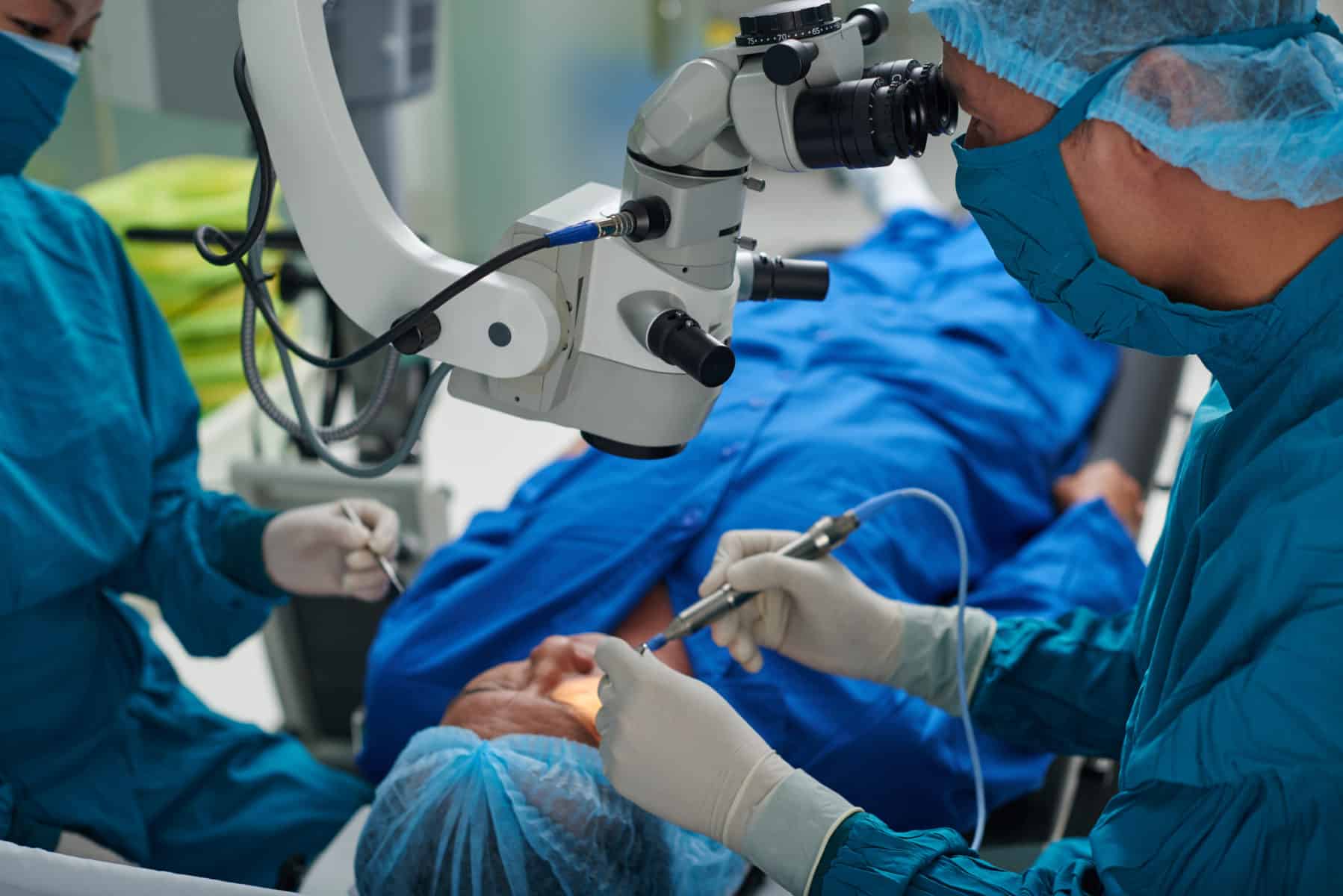A cataract is a condition that results in progressive clouding of the natural lens of the eye. This condition is more common with increased age, but can develop at any point in life. Cataracts are treated with a highly successful outpatient procedure. Today, patients can elect to have traditional cataract surgery or laser refractive cataract surgery.
Table of Contents
What’s the Difference Between Traditional Cataract Surgery and Laser Refractive Cataract Surgery?
Most people over the age of 60 will develop a cataract, which is a progressive clouding of the natural lens of the eye. Cataracts may be caused by heredity, diet, and the use of certain medications. The most common cause of cataracts is the natural aging process and ultraviolet light exposure over time.
Surgery is required to treat cataracts. Treatment of cataracts can improve best-corrected vision with or without full-time glasses. The outpatient procedure involves removing the diseased lens and replacing it with an intraocular lens of a patient’s choosing. Certain intraocular lenses may help a patient become less dependent upon full-time glasses after surgery. Cataract surgery is performed under light sedation through a self-sealing micro-incision less than 2mm wide and is sometimes assisted by a femtosecond laser to treat astigmatism in order to improve uncorrected distance or driving vision.
Traditional Cataract Surgery
Traditional cataract surgery treats the diseased natural lens of the eye by replacing it with a standard intraocular lens. It is expected that the patient’s best after cataract vision will be achieved using either glasses or contact lenses.
Laser Refractive Cataract Surgery
Advanced technology can be used to assist and potentially enhance a patient’s uncorrected after-cataract vision. Vision problems normally treated with glasses or contact lenses such as nearsightedness, farsightedness, astigmatism, and presbyopia (loss of close reading ability with age) can be addressed during cataract surgery using femtosecond laser technology and advanced intraocular lenses such as multifocal, accommodative, or toric intraocular lenses.
Traditional Cataract Surgery vs. Laser Refractive Cataract Surgery
Either procedure can be completed within about 20 minutes, allowing the patients to return home the same day. Recovery time is the same for either procedure – about 24 hours. There are few side effects, which may include blurriness or slight eye discomfort in the early hours after surgery. Moreover, patients are generally able to resume most of their daily activities after their first postoperative visit at their doctor’s office.
Patients will be prescribed several eye drops to guard against infection and inflammation after surgery. The eye drops will be slowly tapered over several weeks to one month after surgery.
A complete medical eye examination is required to determine if cataract surgery is indicated and to review the complete list of risks, benefits, and alternatives to cataract surgery. Specialized diagnostic testing will determine if a patient may qualify for laser refractive cataract surgery and advanced intraocular lenses.
Make an appointment with one of our Michigan eye care specialists to see if laser refractive cataract surgery is right for you.
Comments are closed.



